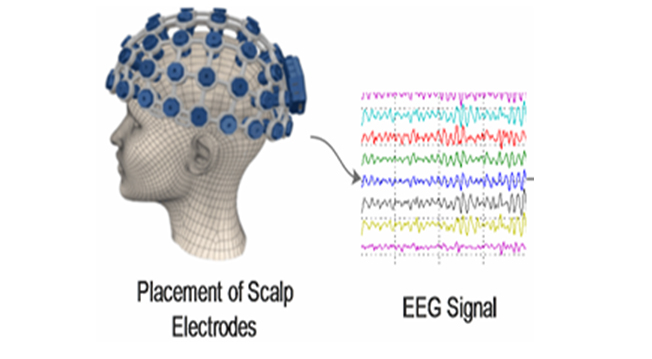Role of EEG in HCI (Human-Computer Interaction)

By :Dr. Banee Bandana Das
Assistant Professor, Department of Computer Science and Engineering, SRM University – AP
Biometrics in HCI focus on enhancing interaction between humans and machines using unique physiological or behavioural characteristics.Traditional biometric traits have several disadvantages compared to EEG-based biometrics. They are more susceptible to forgery, and adversaries can exploit various techniques to bypass them. Moreover, many traditional biometric traits—such as facial features or fingerprints—can change with age, reducing their reliability for long-term identification. In contrast, EEG signals remain consistent over time and are less influenced by aging, making them a unique and robust biometric trait. EEG can be used as a unimodal system or integrated into multimodal systems, providing a strong and secure mechanism to counter identity forgery.
- EEG (Brainwaves) – Cognitive load detection, mental commands

EEG Biometrics for Various Applications
EEG-based biometrics use brainwave patterns, which are unique to individuals, for identity verification and interaction.
Key Applications:
Authentication & Identification: Use of brainwave patterns as biometric signatures, Resistance to spoofing compared to fingerprints or facial recognition. Mental State Monitoring: Stress, fatigue, or focus detection, Useful in aviation, surgery, or e-learning environments. Brain-Computer Interfaces (BCIs): Control of devices (e.g., wheelchairs, drones) using brain signals, Neuroprosthetics and communication tools for disabled individuals. Neurosecurity: Cognitive passwords or “pass-thoughts”, Brainwave-based cryptographic key generation. Healthcare & Rehabilitation: Monitoring of neurological disorders, Neurofeedback therapy. Gaming & Virtual Reality: Immersive VR experiences using cognitive engagement.
Biometric security includes physical and digital security systems. Biometric also can be used in Soldier Identification, Access Control in Military Facilities, Border Security, Combat Readiness Monitoring, Weapon Lock Systems.
In this article, we mainly discussed about the use of EEG signals for identifying individuals. Various machine learning models can be employed for this purpose. Algorithms such as Convolutional Neural Networks (CNNs), Long Short-Term Memory networks (LSTMs), and Autoencoders can be used to improve the system’s performance in accurately recognizing individuals based on their EEG data.




